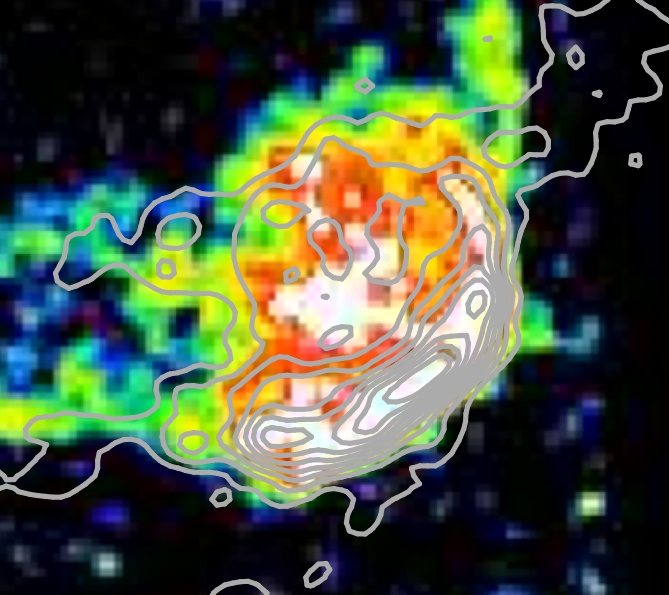
 Credit: X-ray: S¸ölen Balman (METU, Turkey) and NASA; Radio: E. Seaquist (U Toronto)
Credit: X-ray: S¸ölen Balman (METU, Turkey) and NASA; Radio: E. Seaquist (U Toronto)
X-ray Nebulae of a New Star
Stellar explosions are one way in which a star reshapes its environment. One particularly powerful type of outburst comes from the "classical novae", in which a compact white dwarf accretes material from a companion star. Eventually so much material accretes onto the white dwarf surface that a nuclear explosion occurs, and when this happens the star brightens enormously. But what happens to the material ejected in the explosion? A new observation by the Chandra X-ray Observatory of a classical nova called GK Persei helps answer this question. GK Per erupted in 1901, and the material ejected in the explosion has smacked into interstellar material, producing a shell of shocked gas which generates the X-ray emission that Chandra sees. The image above shows the Chandra X-ray image of the nova remnant as a false-color image; the contour lines are derived from a radio image by the Very Large Array. There's a strong correlation between the X-ray emission and the radio emission emission from the nova remnant. The Chandra observation shows that some of these shocks accelerate subatomic particles (like electrons), a process that's been observed in supernova remnants as well.
Last Week *
HEA Dictionary * Archive
* Search HEAPOW
* Education
Each week the HEASARC
brings you new, exciting and beautiful images from X-ray and Gamma ray
astronomy. Check back each week and be sure to check out the HEAPOW archive!
Page Author: Dr. Michael F. Corcoran
Last modified Monday, 26-Feb-2024 17:45:35 EST


